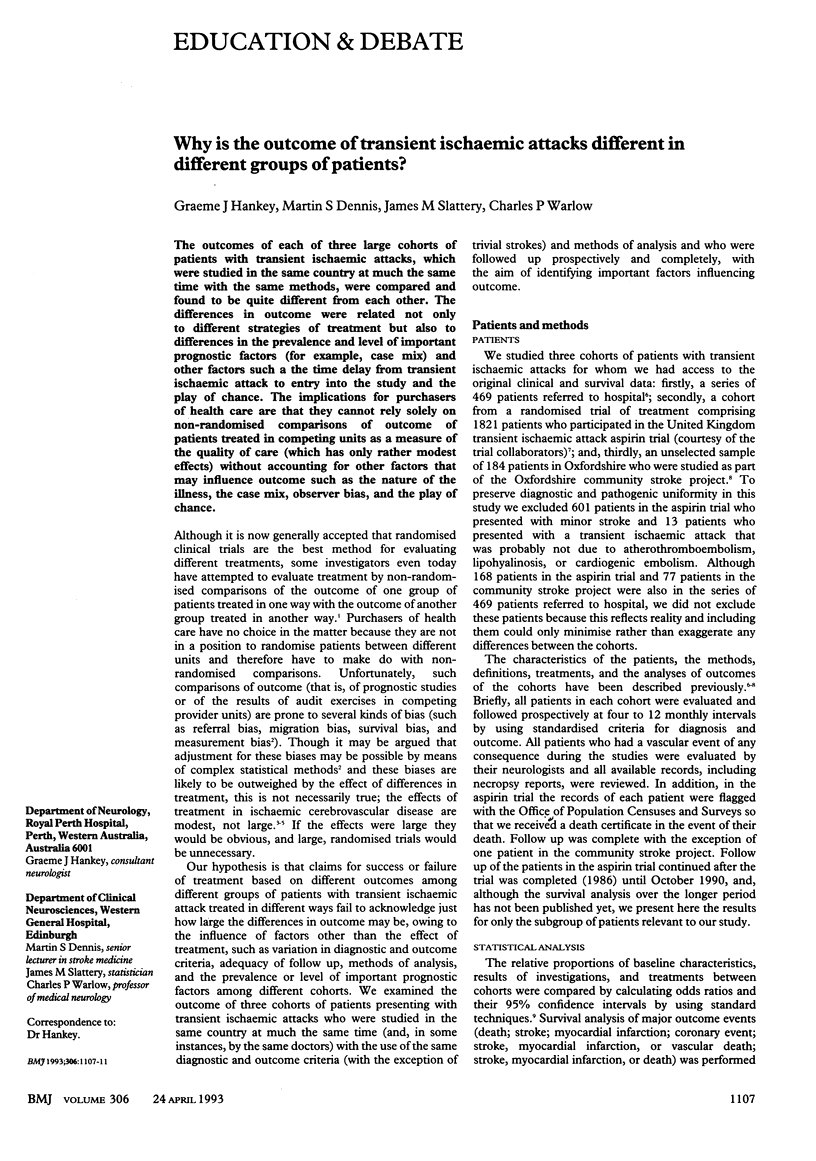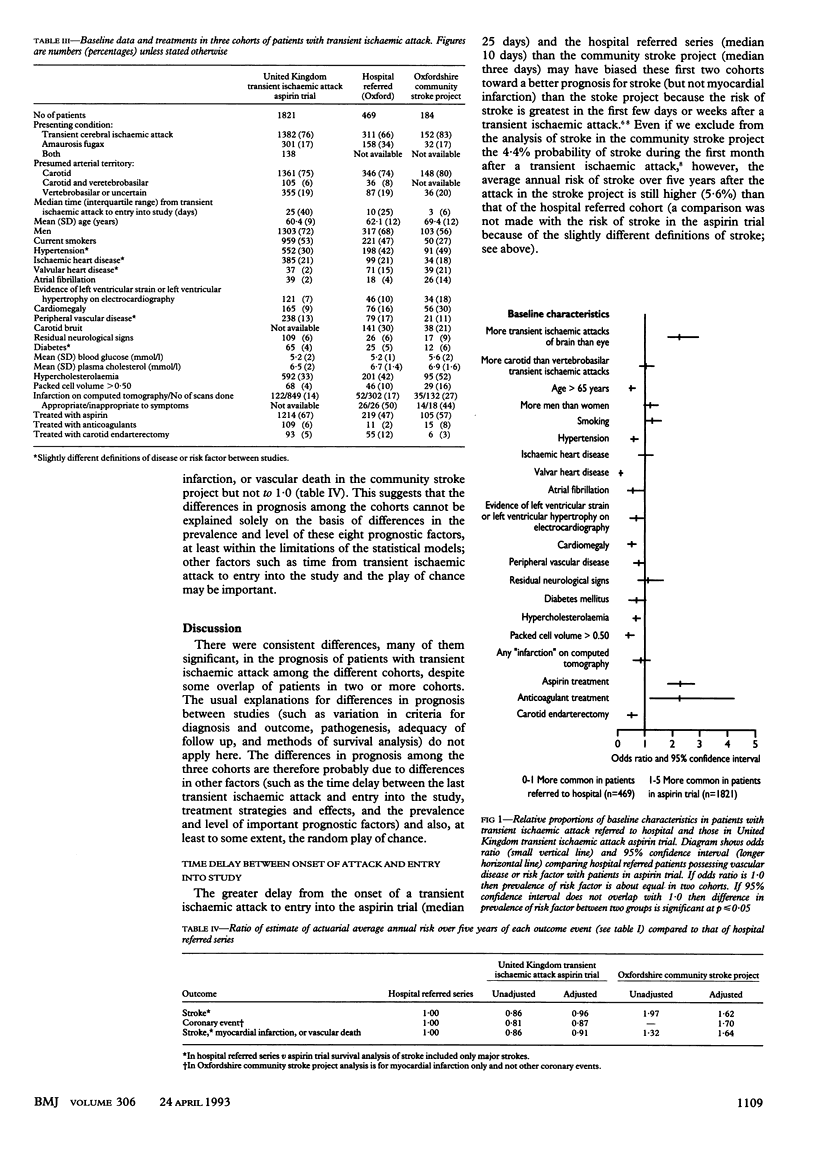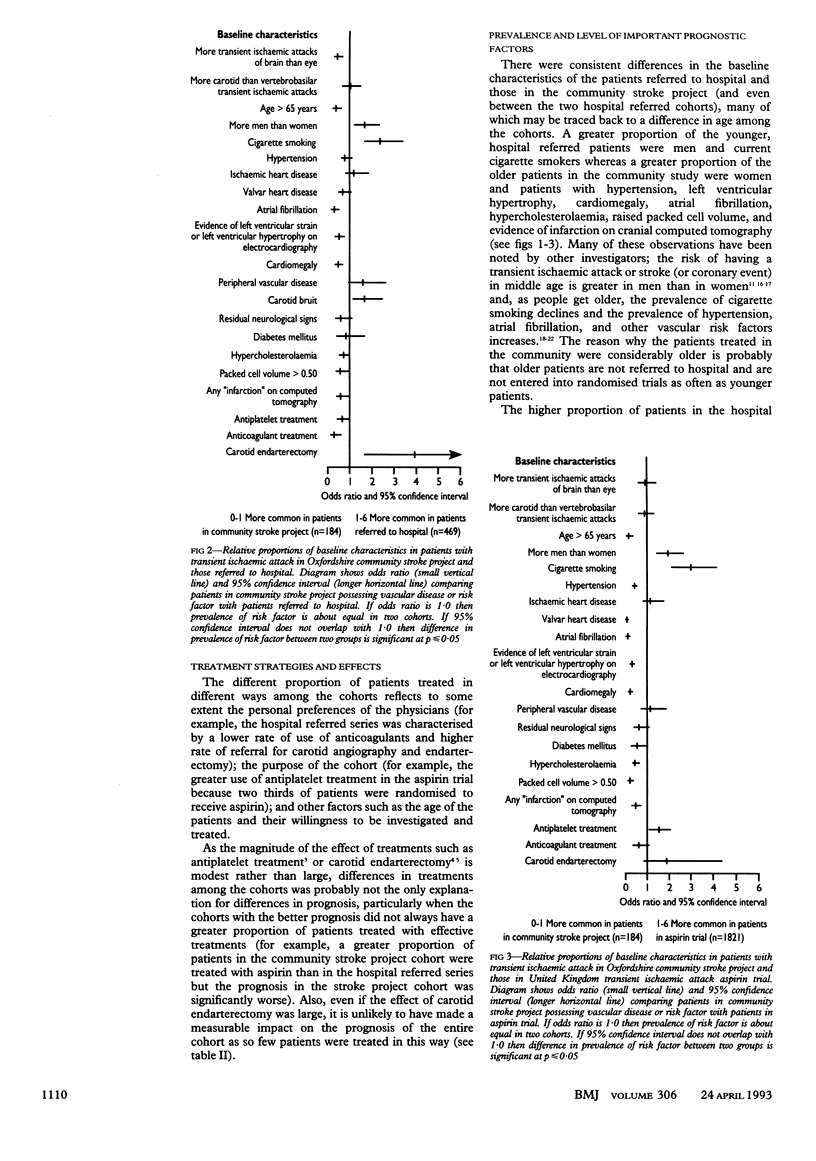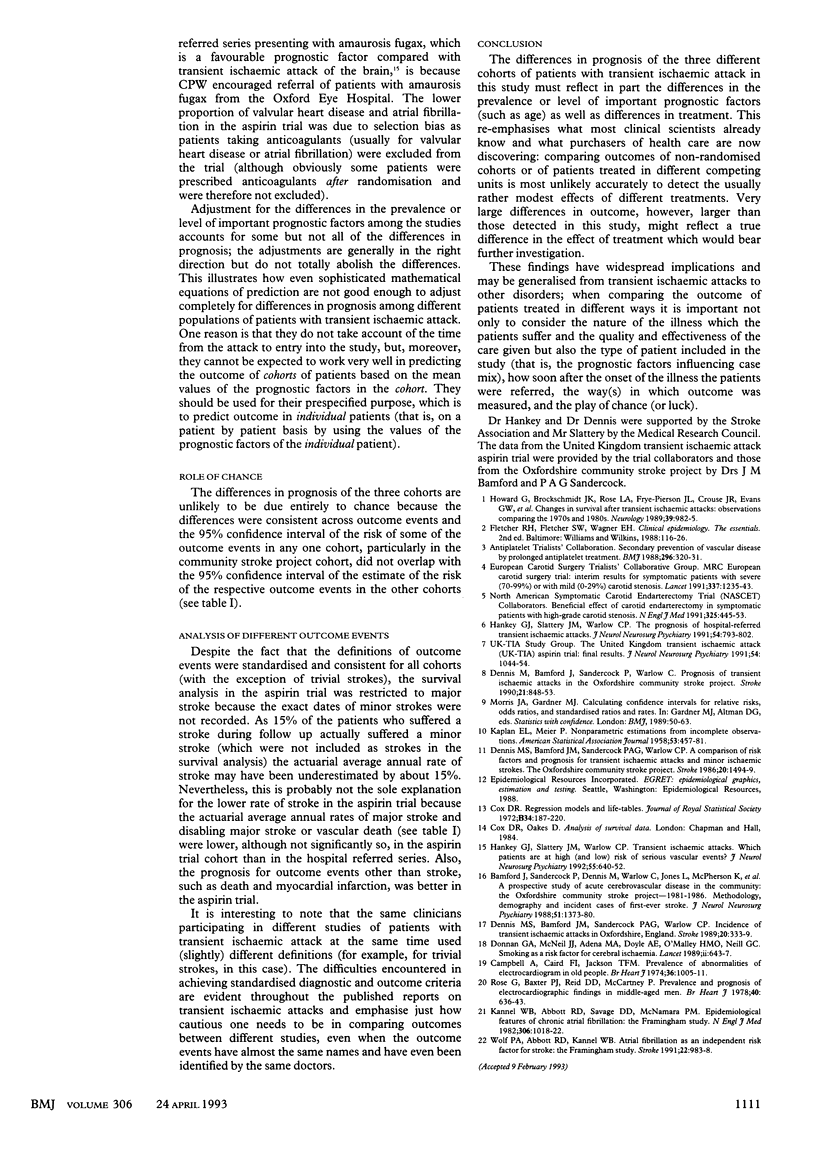Abstract
The outcomes of each of three large cohorts of patients with transient ischaemic attacks, which were studied in the same country at much the same time with the same methods, were compared and found to be quite different from each other. The differences in outcome were related not only to different strategies of treatment but also to differences in the prevalence and level of important prognostic factors (for example, case mix) and other factors such a the time delay from transient ischaemic attack to entry into the study and the play of chance. The implications for purchasers of health care are that they cannot rely solely on non-randomised comparisons of outcome of patients treated in competing units as a measure of the quality of care (which has only rather modest effects) without accounting for other factors that may influence outcome such as the nature of the illness, the case mix, observer bias, and the play of chance.
Full text
PDF




Selected References
These references are in PubMed. This may not be the complete list of references from this article.
- Bamford J., Sandercock P., Dennis M., Warlow C., Jones L., McPherson K., Vessey M., Fowler G., Molyneux A., Hughes T. A prospective study of acute cerebrovascular disease in the community: the Oxfordshire Community Stroke Project 1981-86. 1. Methodology, demography and incident cases of first-ever stroke. J Neurol Neurosurg Psychiatry. 1988 Nov;51(11):1373–1380. doi: 10.1136/jnnp.51.11.1373. [DOI] [PMC free article] [PubMed] [Google Scholar]
- Campbell A., Caird F. I., Jackson T. F. Prevalence of abnormalities of electrocardiogram in old people. Br Heart J. 1974 Oct;36(10):1005–1011. doi: 10.1136/hrt.36.10.1005. [DOI] [PMC free article] [PubMed] [Google Scholar]
- Dennis M. S., Bamford J. M., Sandercock P. A., Warlow C. P. A comparison of risk factors and prognosis for transient ischemic attacks and minor ischemic strokes. The Oxfordshire Community Stroke Project. Stroke. 1989 Nov;20(11):1494–1499. doi: 10.1161/01.str.20.11.1494. [DOI] [PubMed] [Google Scholar]
- Dennis M. S., Bamford J. M., Sandercock P. A., Warlow C. P. Incidence of transient ischemic attacks in Oxfordshire, England. Stroke. 1989 Mar;20(3):333–339. doi: 10.1161/01.str.20.3.333. [DOI] [PubMed] [Google Scholar]
- Dennis M., Bamford J., Sandercock P., Warlow C. Prognosis of transient ischemic attacks in the Oxfordshire Community Stroke Project. Stroke. 1990 Jun;21(6):848–853. doi: 10.1161/01.str.21.6.848. [DOI] [PubMed] [Google Scholar]
- Donnan G. A., McNeil J. J., Adena M. A., Doyle A. E., O'Malley H. M., Neill G. C. Smoking as a risk factor for cerebral ischaemia. Lancet. 1989 Sep 16;2(8664):643–647. doi: 10.1016/s0140-6736(89)90894-5. [DOI] [PubMed] [Google Scholar]
- Hankey G. J., Slattery J. M., Warlow C. P. The prognosis of hospital-referred transient ischaemic attacks. J Neurol Neurosurg Psychiatry. 1991 Sep;54(9):793–802. doi: 10.1136/jnnp.54.9.793. [DOI] [PMC free article] [PubMed] [Google Scholar]
- Hankey G. J., Slattery J. M., Warlow C. P. Transient ischaemic attacks: which patients are at high (and low) risk of serious vascular events? J Neurol Neurosurg Psychiatry. 1992 Aug;55(8):640–652. doi: 10.1136/jnnp.55.8.640. [DOI] [PMC free article] [PubMed] [Google Scholar]
- Howard G., Brockschmidt J. K., Rose L. A., Frye-Pierson J. L., Crouse J. R., Evans G. W., Mitchell E. S., Toole J. F. Changes in survival after transient ischemic attacks: observations comparing the 1970s and 1980s. Neurology. 1989 Jul;39(7):982–985. doi: 10.1212/wnl.39.7.982. [DOI] [PubMed] [Google Scholar]
- Kannel W. B., Abbott R. D., Savage D. D., McNamara P. M. Epidemiologic features of chronic atrial fibrillation: the Framingham study. N Engl J Med. 1982 Apr 29;306(17):1018–1022. doi: 10.1056/NEJM198204293061703. [DOI] [PubMed] [Google Scholar]
- Rose G., Baxter P. J., Reid D. D., McCartney P. Prevalence and prognosis of electrocardiographic findings in middle-aged men. Br Heart J. 1978 Jun;40(6):636–643. doi: 10.1136/hrt.40.6.636. [DOI] [PMC free article] [PubMed] [Google Scholar]
- Wolf P. A., Abbott R. D., Kannel W. B. Atrial fibrillation as an independent risk factor for stroke: the Framingham Study. Stroke. 1991 Aug;22(8):983–988. doi: 10.1161/01.str.22.8.983. [DOI] [PubMed] [Google Scholar]


